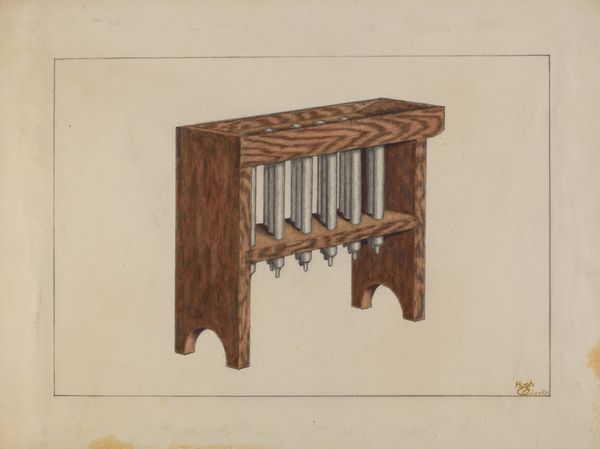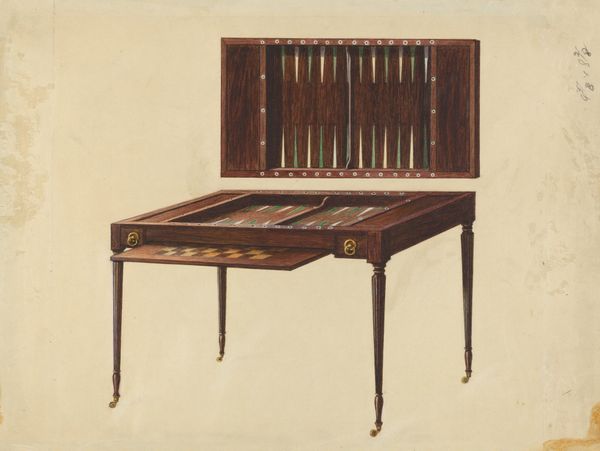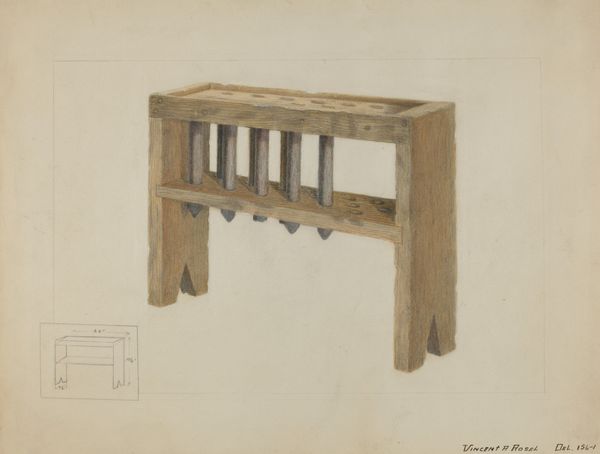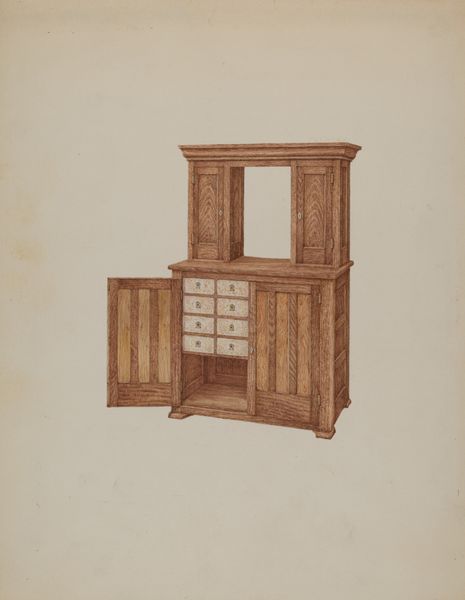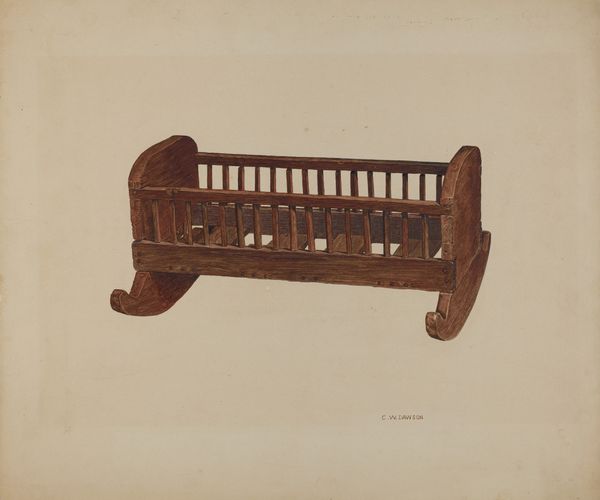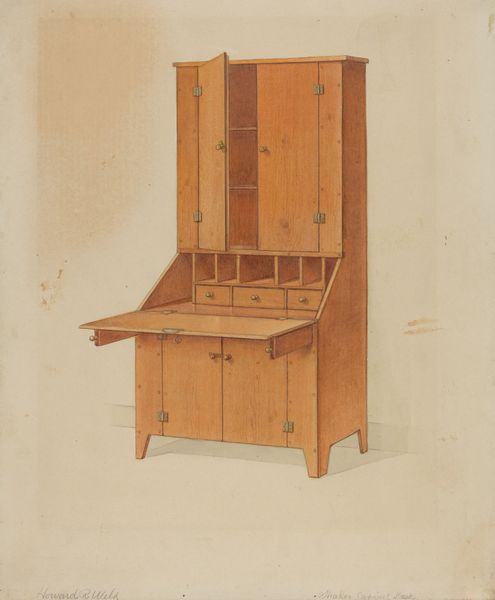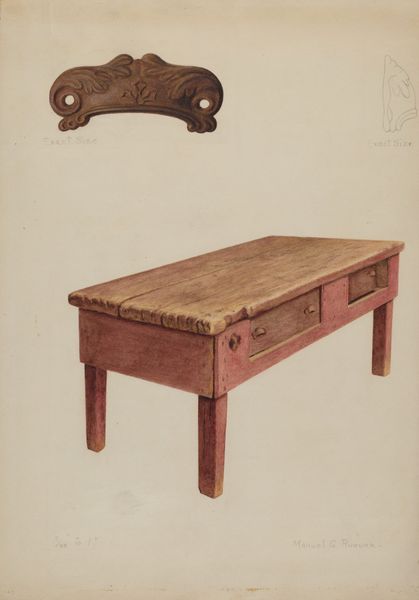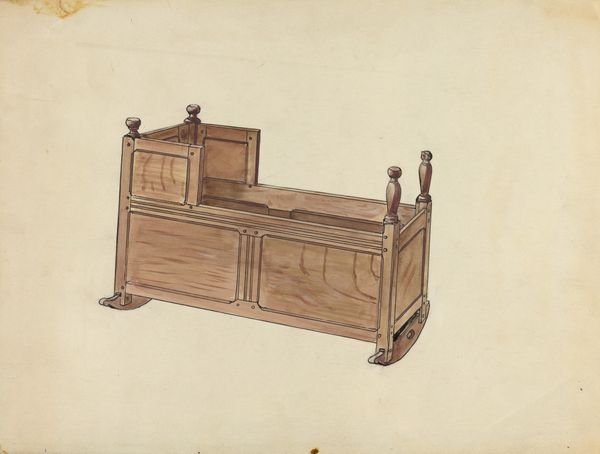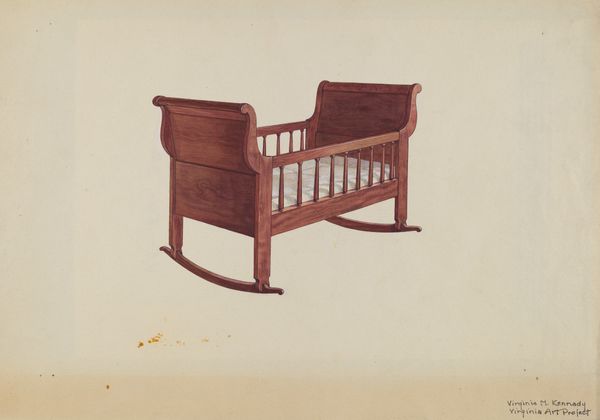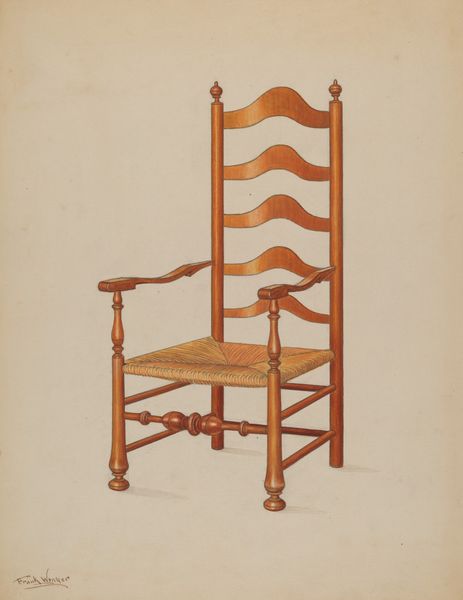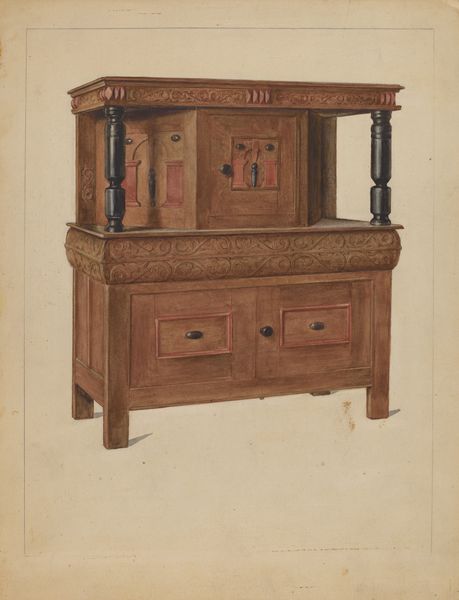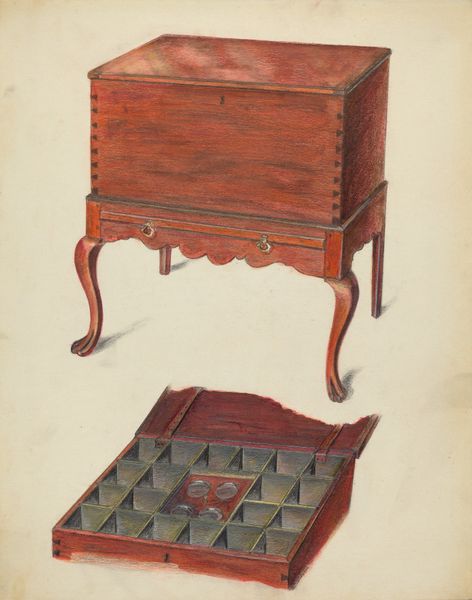
drawing, coloured-pencil, watercolor
#
drawing
#
coloured-pencil
#
charcoal drawing
#
oil painting
#
watercolor
#
coloured pencil
#
watercolor
Dimensions: overall: 23 x 28 cm (9 1/16 x 11 in.)
Copyright: National Gallery of Art: CC0 1.0
Curator: At first glance, this is quite unassuming; a rather rigid, brown wooden structure with these gray, metallic cylinders poking through it. Editor: It's "Candle Mold," dating back to around 1936, created by Hugh Clarke. It’s rendered in watercolor and colored pencil, quite meticulously, on paper. But beyond just seeing what the mold looks like, how are we situating its use? Think of the pre-electrification era and its dependency on such a quotidian device. Curator: Precisely. And that dependency is visible in every facet of the object. Look at the joinery and the grain of the wood. It tells a story about labour, a very practical construction serving a practical need for illumination, for keeping time, or participating in a tradition. There’s no decoration, but still beauty, in the handwork. Editor: It speaks volumes about social conditions as well. The mold gives form to an object intimately tied to class, race, and gender dynamics. To illuminate spaces when access to daylight was scarce, controlled not just how we worked or rested, but how communities came together or did not. Were these for household use? For a trade? By whom were these candles produced? Who did their glow serve? Curator: A pertinent inquiry when contextualising these visual remnants. Consider the materiality—the raw wax and the repetitive, almost mechanical process. The construction of light here involved craft skills, of course. Editor: But it involved resources and specific divisions of labor to acquire beeswax or tallow. We can almost imagine the candle maker at work, navigating economic restraints and the politics around resource distribution and controlled spaces. How differently, and in which directions, could the wax flow? What impact might that change in perspective afford us? Curator: A beautiful reflection! This detailed sketch offers insights into modes of construction while gesturing towards economies of the time. It really brings the artistry of creation to the fore, underscoring a certain pragmatism behind how things were done. Editor: Absolutely. "Candle Mold" reminds us to consider these questions when studying any artistic or utilitarian piece from any time. Who gets to make? Who benefits?
Comments
No comments
Be the first to comment and join the conversation on the ultimate creative platform.
